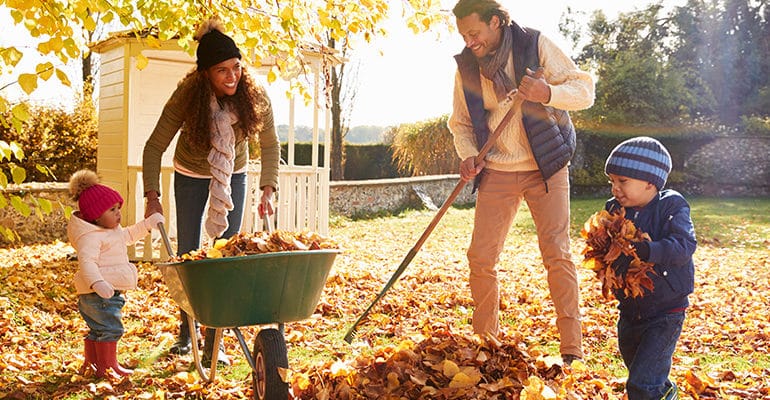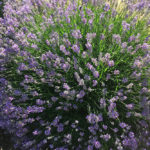As the days grow shorter and temperatures start to drop, now is the perfect time to prepare your garden for the colder months ahead. Taking the right steps in autumn can help protect your plants, lawn, and outdoor features, ensuring they stay healthy and well-maintained throughout winter. In this article, we’ll guide you through everything you need to know, from essential lawn care tips to protecting delicate plants from frost. We’ll also cover how to get your greenhouse ready, the importance of winter pruning, cleaning and storing your garden tools, safeguarding ponds and water features, and caring for your garden furniture. Let’s get started with preparing your garden for the challenges of autumn and winter!
Contents:
Lawn care
How to protect plants in winter
Get your greenhouse ready for winter
Winter pruning
Clean and store garden tools
Protecting ponds and water features
Garden furniture storage

Lawn Care
How to Prepare Lawn for Winter
Proper lawn care in autumn is crucial to ensure your grass survives the cold months and comes back healthier in the spring. As temperatures drop and growth slows, giving your lawn some attention will help it endure the harsh winter weather.
1. Remove Debris: Start by clearing fallen leaves, twigs, and other debris from the lawn. This ensures the grass gets enough air and light, reducing the risk of diseases like mould.
2. Mow Less Frequently: As grass growth slows down in autumn, you can reduce mowing frequency. However, when you do mow, raise the cutting height slightly to leave the grass a bit longer, around 5cm. This length helps protect the roots from frost and cold.
3. Aerate the Lawn: Aerating is a key step in winter lawn prep. It involves making small holes in the soil to improve drainage and reduce compaction. Aerating also allows oxygen, water, and nutrients to reach the grass roots more effectively, promoting healthy growth.
4. Remove Moss and Thatch: Use a scarifier or rake to remove any moss or thatch that’s built up over the year. Thatch can prevent water and nutrients from reaching the soil, while moss creates unhealthy competition for your grass.
5. Apply Autumn Feed: Choose a specially formulated autumn lawn feed that is high in potassium and low in nitrogen. This strengthens the grass in winter by hardening cell walls and improving its tolerance to cold, disease, and drought. It’s an essential part of how to treat grass ahead of the colder months.
Winter Lawn Treatment
While grass in winter isn’t actively growing, there are a few crucial winter lawn tips to keep your lawn healthy and resilient through the season:
1. Avoid Walking on Frosty Grass: One of the easiest yet most effective steps in lawn care in winter is to minimise foot traffic on frosty or frozen grass. Walking on grass during these conditions can damage blades and compact the soil, making it harder for the lawn to recover in spring.
2. Overseeding in Autumn: To prepare for the challenges of winter, overseeding in autumn can help fill in thin patches and encourage thicker growth. This ensures a denser lawn that can withstand the rigours of winter.
3. Winter Lawn Feed: If you’re wondering what to put on grass in winter, a light application of winter lawn feed can continue to protect your lawn. This feed should contain potassium to further strengthen the grass, while avoiding nitrogen, which can encourage weak growth in cold conditions.
4. Monitor for Waterlogging: Wet winters can lead to waterlogged lawns, so ensure your lawn has good drainage. If the ground is compacted, aerating in autumn will help prevent this issue.
By following these winter lawn tips and applying the right treatments, your lawn will be better equipped to endure the cold, and you’ll be rewarded with healthy, green grass when spring arrives.
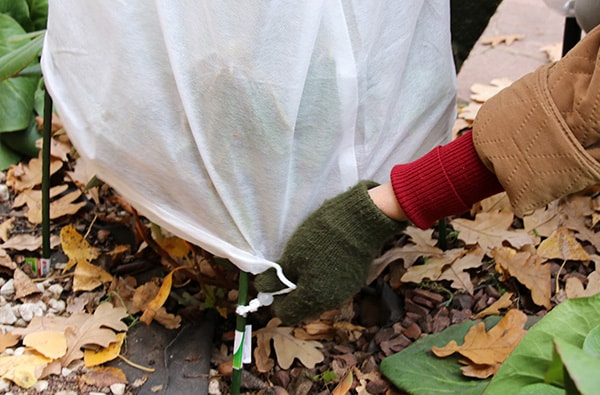
How to protect plants in winter
What is best to cover plants in winter?
Covering plants in winter is essential for protecting them from frost and cold winds, which can cause damage or even kill sensitive plants. The best materials for covering plants include:
• Fleece or Horticultural Fabric: Lightweight and breathable, fleece helps insulate plants while allowing moisture and light to pass through. This is great for providing frost protection without causing overheating.
• Burlap or Hessian: Burlap is a breathable fabric that can shield plants from harsh winds. It’s perfect for wrapping trees, shrubs, or large plants.
• Mulch: A thick layer of organic mulch, such as straw, bark, or compost, can insulate the soil and protect the roots from freezing temperatures.
• Cloches and Cold Frames: These are transparent covers made from glass or plastic that act like mini greenhouses, ideal for smaller plants or seedlings.
• Polythene Sheeting: Clear plastic can be used to create a temporary greenhouse effect. However, it needs to be properly ventilated to avoid mould or rot.
Make sure to remove the covers during the day when the weather warms up to prevent overheating and allow plants to breathe.
Which plants need frost protection in the UK in winter?
Not all plants are built to withstand the colder months in the UK, so it’s important to identify those that require extra care. Plants needing frost protection include:
• Tender Perennials: Plants such as geraniums, dahlias, and fuchsias are popular in UK gardens but cannot survive severe frosts. These can be brought indoors or covered with fleece.
• Tropical Plants: Bananas, palms, and other tropical varieties, often seen in ornamental gardens, need to be wrapped or moved indoors.
• Newly Planted Shrubs or Trees: Young plants and trees are more vulnerable to frost damage because their roots haven’t established fully.
• Herbs like Rosemary and Thyme: These can survive light frosts but may need protection during extended cold spells.
A general rule of thumb is that any plant labelled as “half-hardy” or “tender” will benefit from frost protection in winter.
How do I protect my potted plants in the winter in the UK?
Potted plants are more susceptible to freezing temperatures because the soil in containers cools down faster than ground soil. Here are a few steps to protect them:
• Move Them Indoors: If possible, move potted plants into a greenhouse, conservatory, or even indoors to avoid freezing temperatures.
• Use Insulation: For plants that must stay outside, wrap the pots in bubble wrap, hessian, or a thick fleece to insulate the roots. You can also place the pots in a larger container filled with straw or mulch.
• Raise Pots Off the Ground: Use pot feet or bricks to elevate the containers and prevent waterlogging during wet winter months.
• Group Pots Together: Cluster plants in a sheltered corner of your garden to help them retain warmth and protect them from the wind.
Taking these steps can help ensure your potted plants make it through the winter unscathed.
Should you water outdoor potted plants in winter?
Yes, outdoor potted plants still require water in winter, but much less than in warmer months. The key is to avoid waterlogging:
• Check the soil: Water only when the top few inches of soil feel dry to the touch.
• Water sparingly: Reduce watering as plants go dormant in winter. Overwatering can lead to root rot, especially in cold, soggy conditions.
• Avoid watering in freezing temperatures: Watering during a freeze can cause ice to form around the roots, damaging the plant.
Keep an eye on plants during dry winter spells, as they can still suffer from dehydration.
Can you protect plants from frost with bubble wrap?
Yes, bubble wrap is an effective way to protect plants from frost. It acts as an insulating layer, helping to trap warmth around the plant and the container. You can wrap the bubble wrap around pots or use it to cover plants directly.
For best results:
• Wrap the entire pot, not just the plant, to protect the roots from freezing.
• If covering the plant itself, ensure it has ventilation to prevent condensation build-up, which could lead to mould.
Bubble wrap can help reduce the risk of freezing but doesn’t entirely prevent it. It works by providing insulation and retaining heat, making it more difficult for the plant or soil to freeze. However, during prolonged cold spells or extreme frosts, additional protection, like a fleece cover, may be necessary.
For best results, use bubble wrap as one layer of protection combined with other frost-proofing methods such as mulching and proper plant positioning.

Greenhouses
Why It’s Important to Clean Your Greenhouse Before Winter
Cleaning your greenhouse before winter is essential to maintaining a healthy growing environment for your plants throughout the colder months. Over time, dirt, algae, and plant debris can accumulate, creating an ideal habitat for pests and diseases. By thoroughly cleaning your greenhouse, you remove these potential threats, ensuring your plants start the winter in a clean, disease-free space.
A clean greenhouse also maximises light penetration. As winter days are shorter and darker, any grime on the glass or plastic panels can block precious sunlight that plants need to survive. Cleaning these surfaces allows more light to enter, boosting the warmth and energy available for plants.
Additionally, winter is the time when many gardeners reduce activity, making it the perfect opportunity to tidy up and organise the greenhouse. This includes disinfecting pots, trays, and tools to prevent the spread of bacteria and fungus during winter. Starting with a clean and orderly space helps create an environment where your plants can thrive when the growing season returns.
In short, regular cleaning prevents pest infestations, ensures better light access, and sets your plants up for a successful spring.

Winter Pruning
When is the best time to prune a garden for winter?
The ideal time to prune a garden for winter is during late autumn to early winter, after plants have entered their dormant phase but before the worst of the frost sets in. This usually falls between November and January in the UK, depending on local weather conditions. Pruning during this time ensures that the plants have stopped growing, reducing the risk of shock or damage. It’s also easier to prune deciduous trees and shrubs after their leaves have fallen, giving you a clear view of the branches.
Avoid pruning too late into winter, as severe frosts can damage freshly cut areas. By pruning in early winter, you give the plants time to heal before any harsh weather arrives, setting them up for healthy growth in the spring.
Which Plants Should You Prune in Winter?
Winter is the perfect time to prune many trees, shrubs, and perennials. Focus on the following plants:
• Deciduous Trees and Shrubs: Plants like beech, oak, and rose bushes benefit from winter pruning as it helps shape them and remove any dead or diseased wood. Winter pruning also encourages better flowering and growth in the next season.
• Fruit Trees: Apple, pear, and plum trees should be pruned in winter to promote fruiting and to remove any weak or overcrowded branches. This also improves air circulation, reducing the risk of disease.
• Wisteria: Prune wisteria in the winter to control its growth and maintain its structure for the spring.
• Perennials: Plants like hardy geraniums, lavender, and ornamental grasses can be cut back during the winter to tidy them up and prepare them for new growth in the spring.
Avoid pruning spring-flowering plants like forsythia or magnolia in winter, as this may reduce the number of blooms they produce. Always check the specific needs of each plant before pruning to ensure you’re not accidentally removing buds that will flower next year.
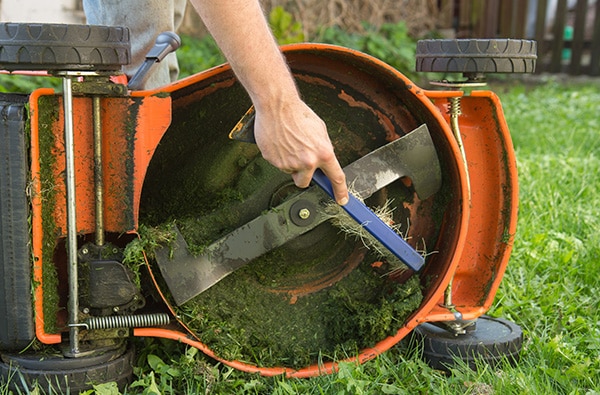
Clean and Store Garden Tools
Lawn Mower Maintenance
Before storing your lawn mower for winter, it’s important to carry out some basic maintenance to ensure it’s in good condition when spring arrives. Start by cleaning the mower thoroughly, removing any grass clippings, dirt, and debris from the blades and underside. Grass can hold moisture, which may cause rusting if left untreated.
Next, check the oil level and either top it up or, for petrol mowers, change the oil if it’s due. Sharpen the blades if they’ve become dull during the mowing season, as sharp blades ensure a clean, even cut. Finally, drain any leftover petrol from the tank, as fuel left over winter can become stale and cause issues when restarting the mower.
Store the mower in a dry, sheltered location such as a shed or garage, and cover it with a protective sheet if possible to keep dust and moisture off.
Storing Garden Power Tools Through Winter
Power tools like hedge trimmers, leaf blowers, and chainsaws need proper care before being stored for the winter months. Begin by cleaning them thoroughly, removing dirt, sap, and debris from moving parts. For tools with motors, check and clean air filters, and inspect the spark plugs for any signs of wear.
Remove any fuel from petrol-powered tools, as leftover petrol can degrade and clog the engine over time. For battery-powered tools, fully charge the batteries and, if possible, store the batteries separately in a cool, dry place to prolong their life.
Make sure to store power tools in a dry, well-ventilated space, away from moisture and extreme cold, as this can damage the electrical components. Hanging them on the wall or storing them on shelves keeps them off the ground and away from any damp.
How to Keep Garden Tools from Rusting
Rust is the biggest enemy of metal garden tools, but with a few preventive measures, you can keep your tools rust-free all winter. Start by cleaning your tools thoroughly after each use. Remove soil, plant residue, and moisture that may have accumulated on metal surfaces, as moisture is what causes rust to form.
Once cleaned, dry your tools completely before applying a light coat of oil, such as linseed or motor oil, to the metal parts. This forms a protective barrier against moisture. For wooden handles, treat them with linseed oil to prevent cracking and splitting.
Store your tools in a dry place, ideally hanging on racks or hooks to keep them off the damp ground. For extra protection, consider storing smaller tools in a container filled with sand and a little oil, which will coat the metal each time you insert them.
How to Clean and Sharpen Garden Tools Before Storing
Properly cleaning and sharpening your garden tools before storing them for winter will extend their lifespan and ensure they’re ready for use in spring. Begin by scrubbing off dirt and plant sap using a wire brush or steel wool. You can also use soapy water or a mixture of water and vinegar to remove tough grime. For tools with sticky residue, like pruners or shears, a cloth dipped in alcohol works well.
After cleaning, dry the tools thoroughly and move on to sharpening. For tools like shears, pruners, and hoes, use a sharpening stone or file to hone the blades. Run the file along the blade edges at a consistent angle to ensure a sharp finish. Wipe the blade down with an oily cloth after sharpening to protect it from rust.
Store tools in a dry area, ideally hung up or in a tool rack, ensuring they’re well organised and easy to access when gardening season begins again.
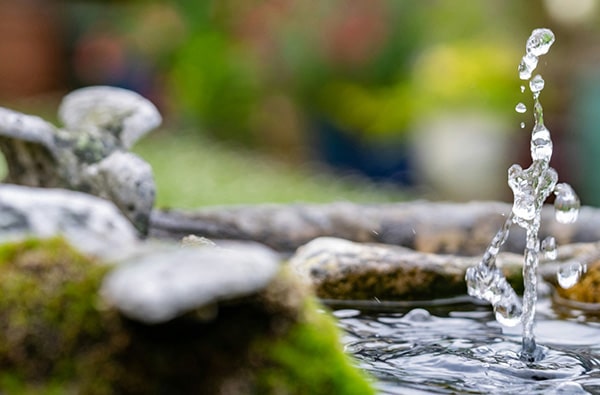
Protecting Ponds and Water Features
How Do I Prepare My Pond for Winter?
Preparing your pond for winter is crucial to maintaining a healthy aquatic environment through the colder months. Start by cleaning the pond to remove fallen leaves, debris, and excess organic matter, which can decompose and release harmful gases into the water. A pond net can help catch debris throughout autumn to reduce the amount that falls into the water.
Next, trim back any pond plants such as water lilies or reeds, cutting them down to just above the waterline. This prevents the plants from decaying in the water and affecting water quality. For fish ponds, reduce feeding as the temperatures drop—fish become less active and require less food in winter. Switch to low-protein fish food or stop feeding entirely once the water temperature consistently drops below 10°C.
Check and clean your pond pump and filters to ensure they’re functioning properly. It’s also a good idea to raise the pump off the bottom of the pond to prevent it from sucking up sediment.
Should Ponds Be Covered in Winter?
Yes, covering your pond in winter can help protect it from debris and excess ice formation. A pond cover or net can prevent leaves, twigs, and other organic material from entering the water, which helps keep the water cleaner and reduces the risk of harmful gas build-up as the debris decomposes.
A cover also provides some insulation, reducing the amount of ice that forms on the surface. This is particularly helpful for fish ponds, as a fully frozen pond can trap toxic gases, which could harm or even kill the fish. Ensure there’s still some airflow or a small gap in the cover to allow gases to escape and oxygen to enter.
How Do You Prepare a Water Feature for Winter?
To prepare a water feature for winter, you’ll need to clean it thoroughly and protect it from freezing temperatures. Start by removing any dirt, algae, or debris that may have accumulated, as these can clog pumps and cause damage if left untreated. For larger features, drain the water entirely to prevent freezing and cracking of the structure.
If your water feature has a pump, clean the filter and pump housing. For features that need to stay operational during winter, make sure the pump is submerged, and the water is circulating, as moving water is less likely to freeze. If you prefer to turn off the water feature, remove the pump, clean it, and store it indoors to prevent frost damage.
For stone or ceramic water features, you may want to cover them with a weatherproof tarp to protect them from frost or ice damage. If the water feature is made from delicate materials, be extra cautious, as freezing water can cause cracks.
How Do You Keep Water from Freezing in a Water Feature?
To prevent water from freezing in a water feature, keep the water circulating. Moving water is less likely to freeze than stagnant water, so keeping the pump running at a low setting can help. If possible, raise the pump slightly so that it doesn’t sit at the bottom, where the coldest water accumulates.
Another way to keep water from freezing is by using a pond heater or de-icer, which keeps the water temperature above freezing. These devices are especially useful in very cold climates or during prolonged cold spells.
If you don’t have a pump or prefer not to run one, placing floating objects such as a tennis ball or plastic bottle in the water can prevent the surface from freezing solid. For small water features, you can also use insulation, like wrapping the base with bubble wrap, to retain some warmth in the structure.

Garden Furniture
How to Store Garden Furniture in the Winter?
Properly storing your garden furniture during the winter months can help extend its life and keep it looking fresh when the warmer seasons return. The best way to store garden furniture is to move it indoors to a shed, garage, or other sheltered storage space. Before storing, ensure all furniture is clean and dry to prevent mould, mildew, and rust.
For wooden furniture, applying a protective coat of oil or wood sealant can provide extra protection against the winter elements. Metal furniture should also be checked for any signs of rust—treat affected areas before storing to prevent further corrosion.
If indoor storage isn’t an option, cover the furniture with waterproof, breathable covers. Avoid using plastic sheeting directly on the furniture, as this can trap moisture, leading to mould or rust.
HIs It Okay to Leave Outdoor Furniture Outside in the Winter?
Leaving outdoor furniture outside in winter is possible, but it depends on the material. Hardier materials like aluminium, stainless steel, and treated wood can generally withstand winter weather, but even these can benefit from protective measures.
Use weather-resistant covers to shield the furniture from rain, snow, and frost. If the furniture is on a lawn or soft ground, consider placing it on a patio or hard surface to avoid moisture absorption from the ground. Cushions and fabric materials should always be brought inside to prevent water damage and mould growth.
It’s also a good idea to elevate furniture legs slightly to avoid direct contact with wet surfaces, which can lead to rotting or rusting over time.
How Long Can You Leave Rattan Furniture Outside in Winter?
Rattan furniture, especially synthetic (PE or resin) rattan, is designed to be more weather-resistant than natural rattan, but prolonged exposure to winter conditions can still cause damage. Ideally, rattan furniture should not be left outside for the entire winter without protection, as the cold, moisture, and frost can cause the material to degrade or crack over time.
If you must leave rattan furniture outside, make sure it’s covered with weatherproof, breathable covers to protect it from the elements. Move cushions and fabric elements indoors. Synthetic rattan can last for a few weeks outdoors in winter with proper covering, but it’s best to store it in a dry, sheltered area for long-term protection.
Natural rattan, on the other hand, should always be stored indoors during the winter months, as it is far more susceptible to moisture and cold damage.
Conclusion
Preparing your garden for autumn and winter is essential to keep it looking its best and ensure it thrives in the colder months. This guide covers everything you need to know, including lawn care, protecting plants from frost, getting your greenhouse ready, winter pruning, maintaining garden tools, safeguarding ponds and water features, and caring for garden furniture. By taking these steps, you’ll help your garden stay healthy and well-maintained until spring. If you’d prefer professional help, Warrens Gardens is here to take care of all your autumn and winter gardening needs and you can contact us here


